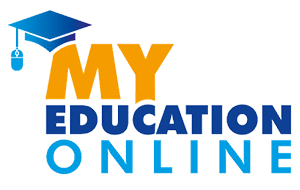
Virtual British Curriculum for Primary and Secondary Students
Education is an ever-evolving field, and with the advancement of technology, new avenues for delivering quality education are emerging. The Virtual British Curriculum for Primary and Secondary Students stands as a significant development, catering to young learners across the globe.
What is the Virtual British Curriculum for Primary and Secondary Students?
The British curriculum, known for its structured approach and rigorous standards, has been a preferred choice among many international schools. It meticulously outlines what students should be taught, ensuring a broad understanding across subjects like English, Maths, Science, and Humanities. However, as we move deeper into the digital age, this curriculum is not confined to physical classrooms. The Virtual British Curriculum is an online education platform that adapts the traditional UK curriculum for online learning. This means that students anywhere in the world can access high-standard educational content at their convenience.
Key Features of Virtual British Curriculum
Flexibility in Learning: Primary and secondary students can learn at their own pace and time, which is particularly beneficial in today’s diverse educational needs.
Accessibility: It breaks geographical barriers, allowing primary and secondary students from any part of the world to receive a quality education.
Interactive Content: Utilizes technology tools to make learning more engaging for primary and secondary students through interactive videos, quizzes, and virtual labs.
Continuous Assessment: Online tracking of primary and secondary student progress with regular assessments and feedback loops.
Advantages of Virtual Learning for Primary and Secondary Students
The shift toward virtual learning environments offers several significant benefits, particularly in how primary and secondary students absorb and interact with the curriculum.
1. Enhanced Learning Flexibility for Primary and Secondary Students: The Virtual British Curriculum provides primary and secondary students with the flexibility to tailor their learning schedules to suit their individual needs.
2. Customizable Learning Experiences for Primary and Secondary Students: With the Virtual British Curriculum, primary and secondary students can access a wide range of educational resources and personalize their learning experiences.
3.Develops Self-Discipline and Time Management for Primary and Secondary Students: Primary and secondary students enrolled in the Virtual British Curriculum learn valuable skills in self-discipline and time management as they navigate their online learning journey. Within the Virtual British Curriculum for Primary and Secondary Students, the emphasis is not only on academic excellence but also on fostering essential life skills.
4. Immediate Feedback and Adaptation for Primary and Secondary Students: The Virtual British Curriculum offers primary and secondary students immediate feedback on their progress, allowing them to adapt their learning strategies accordingly. In the dynamic realm of education, the Virtual British Curriculum for Primary and Secondary Students stands out for its innovative approach to personalized learning. Each of these points contributes to a more tailored educational experience that can meet individual primary and secondary student needs better than traditional methods.
Real-life Success Stories

Numerous case studies and testimonials highlight the successes of primary and secondary students who have thrived under the Virtual British Curriculum. These narratives often include students achieving higher academic performance, better engagement, and a newfound love for self-directed learning.
Overcoming Challenges in Virtual Education for Primary and Secondary Students
Despite its benefits, virtual learning for primary and secondary students is not without challenges. It requires careful consideration and strategic planning to be effectively implemented.
Technological Disparities
Not all primary and secondary students have equal access to the necessary technology—a disparity that can hinder the learning process. Solutions include programs that provide devices to students and improved internet access through government and non-profit initiatives. In the context of the Virtual British Curriculum for Primary and Secondary Students, efforts to bridge the digital divide are integral to ensuring equitable access to quality education.
Ensuring Primary and Secondary Student Engagement
Keeping primary and secondary students engaged in a virtual classroom is markedly different from traditional methods. Teachers need to incorporate interactive and diverse teaching methods such as gamification, virtual group activities, and more to keep Virtual British Curriculum students engaged.
Cultural and Social Considerations
When implementing a curriculum globally, understanding and integrating different cultural contexts is crucial. This ensures that content is not only relevant but also respectful and inclusive, particularly for primary and secondary students from diverse backgrounds.
The Role of Teachers and Educators in Virtual Learning for Primary and Secondary Students
Educators play a crucial role in the successful implementation of the Virtual British Curriculum. Their responsibilities transform from mere deliverers of content to facilitators of learning and guides in the digital landscape.
Adapting to New Technologies: Continuous professional development in educational technology is vital for teachers guiding primary and secondary students through the Virtual British Curriculum.
Personalizing Learning Experiences: Teachers need to tailor interactions based on individual primary and secondary student needs, which can be more challenging but also more rewarding in a virtual setting.
Maintaining Communication: Building a strong teacher-student relationship online requires consistent and effective communication strategies, particularly in the context of the Virtual British Curriculum.
Future Prospects of Virtual British Curriculum for Primary and Secondary Students
As we look to the future, the integration of technologies like AI and VR into the Virtual British Curriculum could further transform educational experiences for primary and secondary students. These technologies have the potential to simulate real-life laboratories, historical events, and much more, providing an even richer learning environment.
Impact on Global Education Standards
The widespread adoption of the Virtual British Curriculum could set a new benchmark in international education standards for primary and secondary students, ensuring a more uniform quality of education across different regions and socioeconomic backgrounds.
Conclusion: Embracing the Virtual Shift in Education for Primary and Secondary Students
The Virtual British Curriculum is more than just an educational framework—it’s a comprehensive approach that prepares young learners for future challenges by fostering an adaptive and personalized learning environment. As education continues to evolve, embracing these virtual learning models can be pivotal in shaping a more inclusive and accessible global education landscape.
Adopting such models not only benefits primary and secondary students but also educators, parents, and administrators by providing more tools and methods to enhance educational delivery. As we continue on this digital educational journey, let’s remain committed to refining and enhancing these systems to better serve our diverse primary and secondary student populations.




